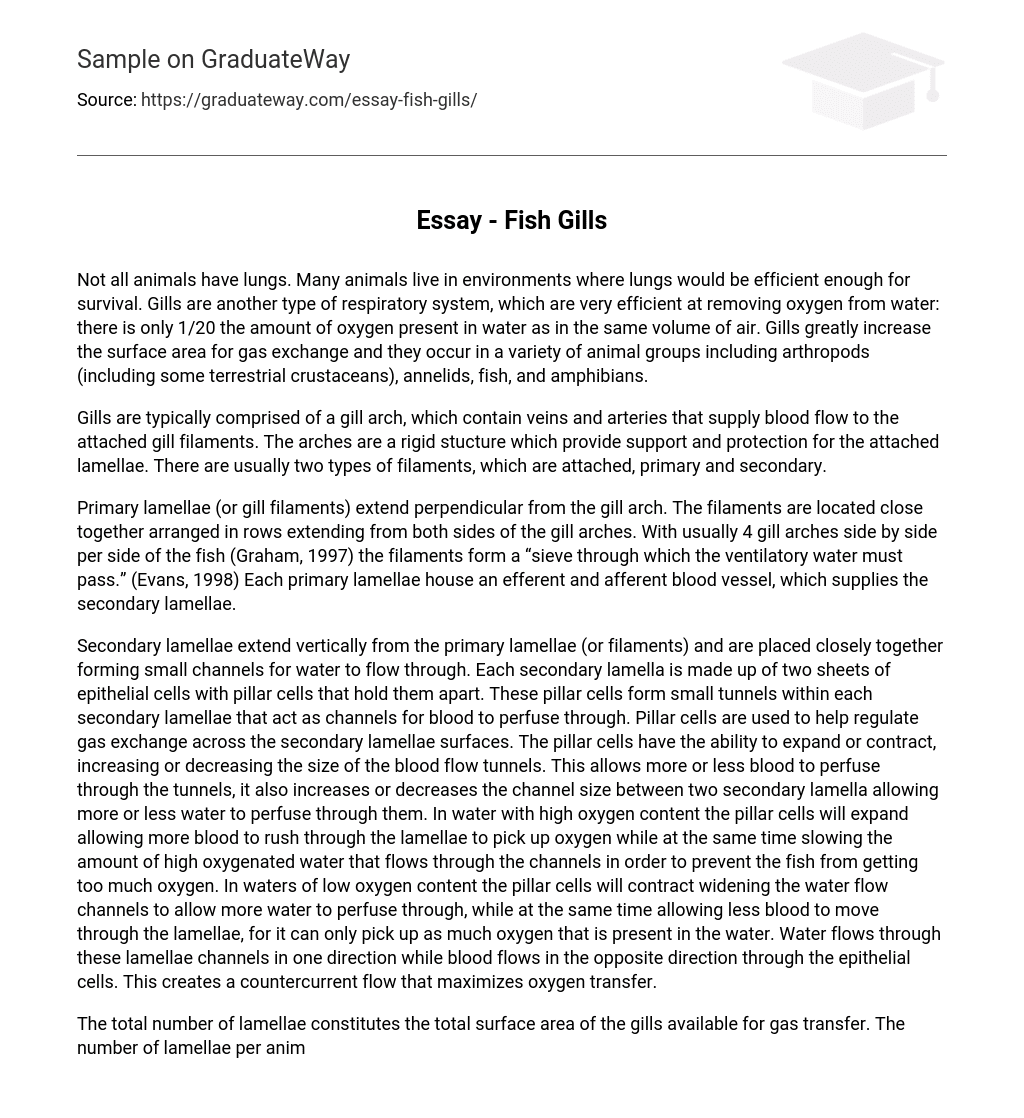Certain animals lack lungs and cannot survive in environments with inadequate lung function. Instead, these creatures rely on gills to obtain oxygen from water. It is noteworthy that the amount of oxygen present in water is just 1/20th of that found in the equivalent volume of air. Gills greatly increase the area available for gas exchange and are present in different animal groups like arthropods (including certain crustaceans found on land), annelids, fish, and amphibians.
The structure of gills comprises of a gill arch which contains veins and arteries responsible for blood circulation to the connected gill filaments. These arches serve as a sturdy framework, providing support and safeguarding the associated lamellae. Generally, two types of attached filaments can be observed: primary and secondary.
Primary lamellae, also called gill filaments, extend vertically from the gill arches in rows. Graham (1997) states that there are usually 4 gill arches on each side of the fish, forming a “sieve through which the ventilatory water must pass” (Evans, 1998). Each primary lamellae has a blood vessel supplying the secondary lamellae.
The primary lamellae, or filaments, generate vertical secondary lamellae that are closely packed together to form small water channels. Each secondary lamella is composed of two sheets of epithelial cells separated by pillar cells, which create tunnels within each secondary lamella for blood perfusion. The pillar cells regulate gas exchange across the surfaces of the secondary lamellae. By expanding or contracting, the pillar cells can adjust the size of the blood flow tunnels and the channel size between two secondary lamellae. This flexibility allows for modifications in the amount of blood and water flowing through. In oxygen-rich water, the expansion of pillar cells permits more blood to flow through the lamellae and pick up oxygen while slowing down highly oxygenated water flow through channels to prevent excessive oxygen intake by fish. In water with low oxygen content, contracted pillar cells widen water flow channels to allow more water perfusion while limiting blood passage through the lamellae due to its ability only to absorb as much oxygen as present in water. Water flows unidirectionally through these lamellar channels whereas blood flows oppositely via epithelial cells.The countercurrent flow maximizes oxygen transfer.
The total surface area of the gills available for gas transfer is dependent on the number of lamellae. The quantity of lamellae per animal is influenced by their size and activity level, with larger and more active animals typically having a greater number of lamellae (Evans 1998).
Gills have a one-directional flow in order to optimize oxygen perfusion. This unidirectional flow enhances efficiency by minimizing the mixing of oxygenated and deoxygenated water directly over the gills, eliminating any potential “dead air space” where such mixing could occur, similar to the trachea.
The physiology of fishes by David Evans in 1998.





